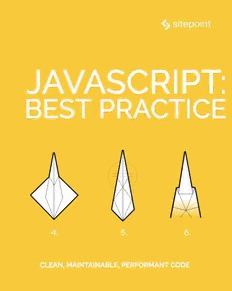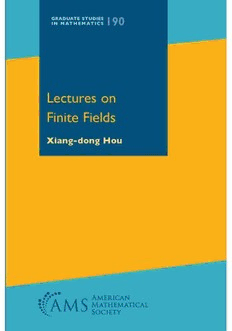
Preview Lectures on Finite Fields
GRADUATE STUDIES 190 IN MATHEMATICS (cid:48)(cid:73)(cid:71)(cid:88)(cid:89)(cid:86)(cid:73)(cid:87)(cid:3)(cid:83)(cid:82) Finite Fields Xiang-dong Hou GRADUATE STUDIES 190 IN MATHEMATICS Lectures on Finite Fields Xiang-dong Hou EDITORIAL COMMITTEE Dan Abramovich Daniel S. Freed (Chair) Gigliola Staffilani Jeff A. Viaclovsky 2010 Mathematics Subject Classification. Primary 11-01, 11Exx, 11Rxx, 11Txx. For additional informationand updates on this book, visit www.ams.org/bookpages/gsm-190 Library of Congress Cataloging-in-Publication Data Names: Hou,Xiang-dong,1962-author. Title: Lecturesonfinitefields/Xiang-dongHou. Description: Providence,RhodeIsland: AmericanMathematicalSociety,[2018]|Series: Gradu- atestudiesinmathematics;volume190|Includesbibliographicalreferencesandindex. Identifiers: LCCN2017049952|ISBN9781470442897(alk. paper) Subjects: LCSH:Finitefields (Algebra)|AMS:Numbertheory–Instructionalexposition(text- books,tutorialpapers,etc.). msc|Numbertheory–Formsandlinearalgebraicgroups–Forms and linear algebraic groups. msc | Number theory – Algebraic number theory: global fields –Algebraicnumber theory: globalfields. msc|Number theory–Finite fields and commuta- tiverings(number-theoreticaspects)–Finitefieldsandcommutativerings(number-theoretic aspects). msc Classification: LCCQA247.3.H682018|DDC512/.3–dc23 LCrecordavailableathttps://lccn.loc.gov/2017049952 Copying and reprinting. Individual readersofthispublication,andnonprofit librariesacting for them, are permitted to make fair use of the material, such as to copy select pages for use in teaching or research. Permission is granted to quote brief passages from this publication in reviews,providedthecustomaryacknowledgmentofthesourceisgiven. Republication,systematiccopying,ormultiplereproductionofanymaterialinthispublication ispermittedonlyunderlicensefromtheAmericanMathematicalSociety. Requestsforpermission toreuseportionsofAMSpublicationcontentarehandledbytheCopyrightClearanceCenter. For moreinformation,pleasevisitwww.ams.org/publications/pubpermissions. Sendrequestsfortranslationrightsandlicensedreprintstoreprint-permission@ams.org. (cid:2)c 2018bytheauthor. Allrightsreserved. PrintedintheUnitedStatesofAmerica. (cid:2)∞ Thepaperusedinthisbookisacid-freeandfallswithintheguidelines establishedtoensurepermanenceanddurability. VisittheAMShomepageathttp://www.ams.org/ 10987654321 232221201918 To Dong-lin, Wendy, and Elaine Contents Preface vii Chapter 1. Preliminaries 1 §1.1. Basic Properties of Finite Fields 1 §1.2. Partially Ordered Sets and the Mo¨bius Function 12 Exercises 17 Chapter 2. Polynomials over Finite Fields 23 §2.1. Number of Irreducible Polynomials 23 §2.2. Berlekamp’s Factorization Algorithm 26 §2.3. Functions from Fn to F 32 q q §2.4. Permutation Polynomials 40 §2.5. Linearized Polynomials 46 §2.6. Payne’s Theorem 50 Exercises 54 Chapter 3. Gauss Sums 57 §3.1. Characters of Finite Abelian Groups 57 §3.2. Gauss Sums 64 §3.3. The Davenport-Hasse Theorem 67 §3.4. The Gauss Quadratic Sum 70 Exercises 73 Chapter 4. Algebraic Number Theory 77 §4.1. Number Fields 77 v vi Contents §4.2. Ramification and Degree 87 §4.3. Extensions of Number Fields 89 §4.4. Factorization of Primes 95 §4.5. Cyclotomic Fields 96 §4.6. Stickelberger’s Congruence 102 Exercises 105 Chapter 5. Zeros of Polynomials over Finite Fields 111 §5.1. Ax’s Theorem 111 §5.2. Katz’s Theorem 116 §5.3. Bounds on the Number of Zeros of Polynomials 119 §5.4. Bounds Derived from Function Fields 127 Exercises 139 Chapter 6. Classical Groups 143 §6.1. The General Linear Group and Its Related Groups 144 §6.2. Simplicity of PSL(n,F) 146 §6.3. Conjugacy Classes of GL(n,F ) 153 q §6.4. Conjugacy Classes of AGL(n,F ) 160 q §6.5. Bilinear Forms, Hermitian Forms, and Quadratic Forms 172 §6.6. Groups of Spaces Equipped with Forms 192 Exercises 215 Bibliography 221 List of Notation 223 Index 227 Preface This book is partially based on the lecture notes of several graduate courses that I taught at the University of South Florida since 2005. The first draft was written in 2006. The manuscript went through a thorough revision between 2015 and 2016 and finally evolved into the present form. Thesubjectoffinitefieldsisattheintersectionofalgebra,combinatorics, andnumbertheory,andisasourceofwidespreadapplicationsininformation theory and computer science; as such, its boundary is not always easy to define. The following is a partial list of some areas that are traditionally considered important in the subject: (i) algebraic structures of and related tofinitefields;(ii)numbertheoryoffinitefieldsandfunctionfieldsoverfinite fields;(iii)finitegeometryandcombinatoricsoffinitefields;(iv)applications of finite fields in coding theory and cryptography. The standard references for finite fields are Finite Fields [27] by R. Lidl and H. Niederreiter and Handbook of Finite Fields [28] edited by G. Mullen and D. Panario. The former is a treatise on the theory and applications of finite fields with a comprehensive bibliography up to the early 1980s. The latter is the first handbook of finite fields and contains significant results from all areas of finite fields up to the early 2010s. Thepresentbookisintendedtobeanexpositionofselectedtopicsinthe theory of finite fields that can be used as a textbook for a graduate course. More precisely, my expectation of the finished work is a volume with a limited scope that covers the fundamentals of finite fields and explores ad- ditional selected topics without excessive overlap with other existing books on finite fields. Material gathering for the book was guided by these ob- jectives. Inevitably, the topics selected reflect my own perspectives on the subject. To limit the scope of the book, I have resisted the temptation to vii viii Preface include other topics that are arguably both important and interesting, and the temptation to expand on some topics that are already in the book. In particular, applications of finite fields are not explored except for the Reed- Muller codes, which are treated in Chapters 2 and 5 under the guise of polynomials over finite fields. I hope this shortcoming is remedied by the fact that there are many excellent books devoted to applications of finite fields. I wish to mention a few unique features of the book. It contains some nontrivial results that are not so well known but are quite useful (e.g., the formula for the cardinalities of the conjugacy classes of the affine linear group AGL(n,F )); it also contains simplified proofs of several important q theorems (e.g., the author’s proof of the Katz theorem and Leducq’s proof of the Delsarte-Goethals-MacWilliams theorem). Here are the outlines of the chapters: Chapter 1: The first section provides the preliminaries for the rest of the book. All basic facts about finite fields are proved there. Section 1.2 is devoted to partially ordered sets and the M¨obius function, which are used later to count the number of irreducible polynomials over finite fields. Chapter 2: We address a number of issues related to the algebra and combinatorics of polynomials over finite fields, except for questions con- cerning zeros of polynomials over finite fields, which are discussed later in Chapter5. ThetopicsincludeBerlekamp’sfactorizationalgorithm,counting for irreducible polynomials and irreducible factors, polynomial representa- tion of functions, permutation polynomials, Dickson polynomials, linearized polynomials, and a generalization of a theorem by S. Payne on linearized polynomials. I have resisted the temptation to expand the coverage of per- mutation polynomials, which constitute an active research area of finite fields; interested readers are referred to a recent survey [17] on permutation polynomials. The last section on Payne’s theorem is rather technical; the reader may choose to skip it at first reading. Chapter 3: After a discussion of characters of finite abelian groups, Gausssumsareintroduced. ThehighlightsofthechapteraretheDavenport- Hasse theorem on the Gauss sum of a lifted character and the calculation of the Gauss quadratic sum. Chapter 4: This chapter is essentially a tailored introduction to al- gebraic number theory. No prerequisites other than graduate algebra and elementary number theory are required. Basic properties of number fields are proved and prime factorizationin an arbitrary number field is discussed. In section 4.5, we focus on cyclotomic fields and determine how primes fac- tor in such fields. In the last section, the results on cyclotomic fields are used to prove the Stickelberger congruence for Gauss sums. Preface ix Chapter 5: Zeros of polynomials over finite fields are an area where sophisticated methods are developed and profound results are proved. In this chapter, we introduce several theorems on zeros of polynomials over finite fields that are of fundamental importance. The theorems of Ax and Katz give sharp lower bounds for the p-adic order of the number of zeros of one or several polynomials over a finite field of characteristic p. The proof of Ax’s theorem relies on Stickelberger’s congruence for Gauss sums. The proof of Katz’s theorem adopted here, found by the author, is much simpler than the original. Theorem 5.9 is a sharp lower bound for the number of common zeros of several polynomials, and Theorem 5.11 is a sharp upper bound for the number of zeros of one polynomial. The Delsarte-Goethals- MacWilliams theorem completely determines the polynomials meeting the upper bound in Theorem 5.11. The Delsarte-Goethals-MacWilliams theo- rem originally appeared as a characterization of minimal-weight codewords in the q-ary Reed-Muller code [9]; unfortunately, this strong result does not seem to be well known outside the coding theory community. The proof of the Delsarte-Goethals-MacWilliams theorem included here, recently dis- covered by Leducq, is also much simpler than the original. The last major theorem of the chapter is the Hasse-Weil bound on the number of zeros of an absolutely irreducible polynomial over a finite field. The result is easily stated, butitsproofisbeyondthescopeofthepresentbook. We attemptto alleviate the predicament by including a sketchy and informal introduction tofunctionfields; section5.4isdevotedtooutliningthecomponentsoffunc- tion fields that lead to the Hasse-Weil bound. Along the theme-line “places – the Riemann-Roch theorem – extensions – the zeta function – Riemann’s hypothesisforfunctionfields–theHasse-Weilbound”,notionsandconcepts are defined and theorems are stated without proof. For readers with some knowledgeoffunctionfields, section5.4servesasareview; forthosewithout such knowledge, the section serves as a preview. Chapter 6: The last chapter is an introduction to classical groups over finite fields. For a considerable part of this chapter, the field F is assumed to be more general than finite. We prove the simplicity of PSL(n,F) and derive formulas for the cardinalities of the conjugacy classes of the general linear group GL(n,F ) and the affine linear group AGL(n,F ). The formula q q forAGL(n,F ),whichisusefulforstudyingAGL(n,F )-actionsonsets,does q q not seem to have appeared in any book. The last two sections are devoted to bilinear forms, unitary forms, quadratic forms, and the classical groups associated to such forms. When the field is finite, the forms are classified and the orders of the associated classical groups are determined. Eachchaptercontainsasetofexercisesrangingfromeasytochallenging. The book is mostly self-contained. Except for section 5.4, almost all results in the book are proved in detail. The reader is assumed to have a basic
The list of books you might like

Credence

The Spanish Love Deception

The Subtle Art of Not Giving a F*ck

Rich Dad Poor Dad
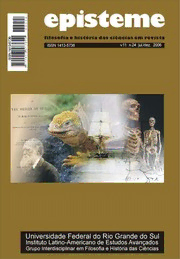
Episteme - Filosofia e História das Ciências em Revista vol. 11, n. 24, 2006
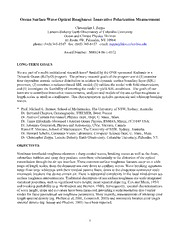
DTIC ADA523865: Ocean Surface Wave Optical Roughness: Innovative Polarization Measurement

FREE E-Book The Unseen Therapist

Blumen für Algernon

Japp, Andrea H. - Sang Premier
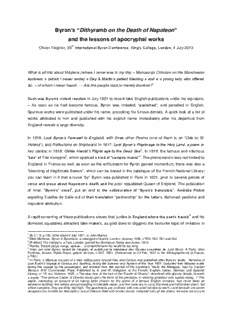
Byron’s “Dithyramb on the Death of Napoleon and the
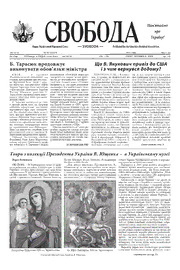
Svoboda-2006-49

Byron Alexis Mullo Naula
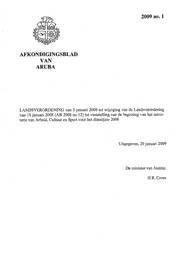
Afkondigingsblad van Aruba 2009 no. 1
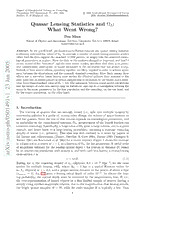
Quasar Lensing Statistics and Omega_Lambda: What Went Wrong?

Bedienungshandbuch

Centenary Magazine
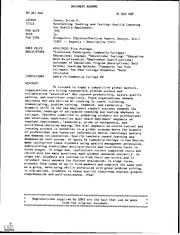
ERIC ED361046: Reinventing Teaching and Testing: Quality Learning for Quality Employment.
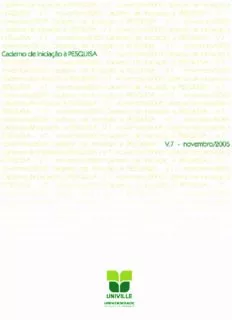
Caderno de Iniciação à Pesquisa Vol. 07

Pantera no porão

The Short Pulse Hierarchy
